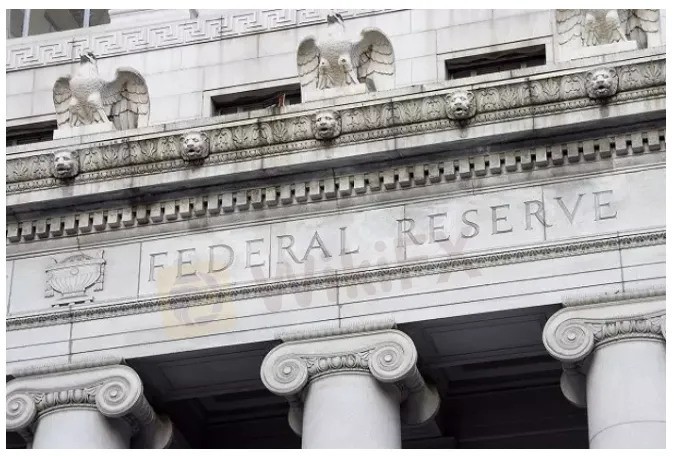简体中文
繁體中文
English
Pусский
日本語
ภาษาไทย
Tiếng Việt
Bahasa Indonesia
Español
हिन्दी
Filippiiniläinen
Français
Deutsch
Português
Türkçe
한국어
العربية
How Far Is the Fed Prepared to Take Policy Tightening?
Abstract:It is widely assumed that the Federal Reserve will raise interest rates by half a percentage point, the first increase of that size since 2000.

Inflation, Labour Market and the FOMC
This aggressive step is just the first of three half point moves anticipated by markets at its next meetings in June and July. Policymakers are focused on the historic pace of inflation at 40-year highs and the associated risks.
Markets have been left in no doubt that the FOMC intends to speed up rate hikes to get the Fed Funds target rate quickly back to neutral. The March FOMC minutes revealed that a 50bp hike could have been on the table had it not been for the Ukraine conflict. That is a rare event when the Fed even considers delivering something that was not pre-discounted by the market (even if often pushed there by the Fed in the first place).
Chair Powell himself has said it was appropriate to “be moving a little more quickly” to tighten policy. indeed, he guided that “theres something to the idea of front-loading” rate hikes. The latest inflation print hit 8.5% and Fed officials have warned of upside risks to price growth due to war in Ukraine and Chinese lockdowns.
The tight labour market should also be confirmed with another healthy non-farm payrolls report on Friday, which should trump the surprise first quarter GDP contraction. Wages are rising amid a lack of workers with most economists seeing US consumer price growth remaining elevated above 4% during 2022.
Fed Funds Rate Forecasts for the Rest of the Year
Markets are betting that the Fed funds rate, currently between 0.25% and 0.5%, will be lifted to 2.7% by the end of December, pushing potentially up to 3% next year. Financial conditions have begun to tighten, in anticipation of quantitative tightening that should be formally announced on Wednesday. We also note that sentiment figures have been edging lower recently. This could point to a cyclical slowdown in the second half of the year.
But monetary policy remains highly accommodative with the US 10-year “real” rate only just turning positive. That means it is still below neutral which signifies that policy remains very easy. Many economists see risks may be skewed towards faster rate moves and an even stronger dollar. A half point rate rise is baked in so it will be down to Chair Powell and a repeat of an “expeditious” normalisation of policy to keep the buck bid. The key question is how fast the Fed can raise rates without slowing growth and causing a US recession.
For more information, please visit: FXTM
Disclaimer: This written/visual material is comprised of personal opinions and ideas. The content should not be construed as containing any type of investment advice and/or a solicitation for any transactions. It does not imply an obligation to purchase investment services, nor does it guarantee or predict future performance. FXTM, its affiliates, agents, directors, officers or employees do not guarantee the accuracy, validity, timeliness or completeness of any information or data made available and assume no liability for any loss arising from any investment based on the same.

Disclaimer:
The views in this article only represent the author's personal views, and do not constitute investment advice on this platform. This platform does not guarantee the accuracy, completeness and timeliness of the information in the article, and will not be liable for any loss caused by the use of or reliance on the information in the article.
Read more

The Ultimate Guide to Automated Forex Trading in 2025
Modern markets are revolutionized by automated trading systems, which now execute 70-85% of all transactions. These advanced automated trading software solutions, commonly called trading robots or Expert Advisors (EAs), leverage algorithmic precision for automatic trading across forex, stocks, and commodities 24/7. By removing emotional interference and executing trades in microseconds, auto forex trading platforms create fair opportunities for all market participants. For those new to automated trading for beginners, these systems provide disciplined, backtested strategies while significantly reducing manual effort.

Will natural disasters have an impact on the forex market?
The forex market is known for its rapid responses to global events, but the influence of natural disasters, such as earthquakes and typhoons, can be less straightforward. While headlines may scream about catastrophic damage and economic disruption, the long-term effects on currency values often depend on a blend of immediate shock and underlying economic fundamentals.

Philippines Deports 29 Indonesians Linked to Online Scam Syndicate in Manila
Online scam groups in the Philippines trick Filipinos into gambling and love scams, from Manila to Bacolod, causing trafficking and pain as police fight back.

Why does your mood hinder you from getting the maximum return from an investment?
Investment decisions are rarely made in a vacuum. Aside from the objective data and market trends, our emotions—and our overall mood—play a crucial role in shaping our financial outcomes. Whether you’re feeling overconfident after a win or anxious after a loss, these emotional states can skew your decision-making process, ultimately affecting your investment returns.
WikiFX Broker
Latest News
How Crypto Trading Transforms FX and CFD Brokerage Industry
UK would not hesitate to retaliate against US tariffs - No 10 sources
FCA Warns Against 10 Unlicensed or Clone Firms
CySEC Warns Against 14 Unlicensed Investment Websites
Top Currency Pairs to Watch for Profit This Week - March 31, 2025
Will natural disasters have an impact on the forex market?
Philippines Deports 29 Indonesians Linked to Online Scam Syndicate in Manila
Navigating the Intersection of Forex Markets, AI Technology, and Fintech
Exposed: Deceptive World of Fake Trading Gurus – Don’t Get Fooled!
AI-Powered Strategies to Improve Profits in Forex Trading
Currency Calculator







